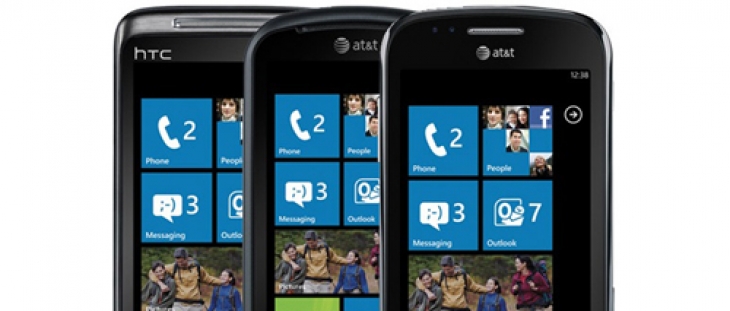
 Of all the ways you might have imagined Microsoft screwing up, “making something fantastic” is probably last on the list. As every business student will tell you, the first and most important step to success is making a quality product. Yet, Microsoft seem to have found themselves in the very strange situation of making something very good – their mobile platform, Windows Phone –and actually doing worse than before. Even more confusing, however, is that it might be Microsoft’s commitment to finally get it right this time that has hurt them. And somewhere in this mess, there are a number of lessons for some very new challenges to businesses. The latest round of reflection started when former Windows Phone GM Charlie Kindel wrote a post about why Microsoft had a superior mobile product yet was still unpopular. The reason, Kindel argued, is that Google’s Android has made things frictionless for carriers and hardware manufacturers. Anyone can do anything with Android, and that capacity to make many phones cheaply led to wide adoption. Apple, meanwhile, can do whatever they want because they’ve nailed all levels of the game: hardware, software, apps and media. On the other hand, Kindel argued, Microsoft’s insistence on certain consistencies of interface and hardware has left its partners handcuffed. The funny thing is that Windows Phone is, in many respects, very good. Whether or not the interface is better than iOS comes down to subjective preference, but there’s certainly a compelling argument to be made. Moreover, the core of the OS simply works: doing what you want is fast and intuitive. This happened because, presented with a market dominated by the open, if scattered approach Android and the tightly integrated way of Apple, Microsoft did what seems logical: they created a compromise between the two. Put the OS on a lot of phones, but make the thing consistently good. Makes sense, right? But in a world of overlapping ecosystems of carriers, apps and media, making a connected product like a smartphone is akin to building transit: the key to success is ensuring unfettered flow between important areas. And strangely, quality control done wrong can become a sort of chokepoint. In dedicating resources and attention to the interface and first-party apps, Microsoft neglected not only hardware design, which they left to their partners, but the performance of apps they didn’t make, like Twitter or Facebook. What’s more, in enforcing the very consistency that makes the OS great, they gave carriers and hardware makers very little room to differentiate themselves, creating a vicious cycle that stymied sales, in turn giving app developers less reason to create for the platform. In doing so, they presented consumers with an impossible choice: pick a phone with a brilliant interface but fewer, worse-performing apps and no compelling hardware; or pick the pretty or popular thing all your friends are using. When so much of a smartphone’s success relies on it being an entry point to connected, social experiences, it’s no wonder that Windows Phone is lagging behind. More to the point, in thinking of Windows Phone as a kind of compromise between Android’s many choices and Apple’s emphasis upon user experience, Microsoft have put themselves in an untenable position in which they can’t control whether hardware is sexy or not, but must throw cash at developers to create apps. It’s a bit of an unfortunate mess. It’s a strange lesson for contemporary digital businesses, too. User experience is paramount and thus quality and consistency are key. But because digital is now a space in which comparatively few players dominate, the way to enter a market is to sometimes sacrifice overall quality for the ability to scale, and scale in a way that isn’t limited to one platform or hardware manufacturer. That this is less than ideal from the perspective of quality doesn’t make it any less smart. This is exactly what Google has done with Android. It entered the market by sacrificing the quality of the OS, but now has the choice to begin to reduce fragmentation and reign in the chaos. Similarly, Apple has the option to offer a lower-cost model or different form factor to widen its demographic reach. Microsoft, on the other hand, seem to be neither here nor there, having to rely on app developers to create, while not being able to push hardware manufacturers to create something incredible. Certainly, it’s possible the North American arrival of Nokia’s beautiful phones can change this, giving MS the halo phone it needs to more directly enter public consciousness. But in the meantime, in their commitment to quality, Microsoft seem to have ironically shot themselves in the foot. Navneet Alang is Toronto Standard’s Tech Critic. You can follow him on Twitter @navalang.
Of all the ways you might have imagined Microsoft screwing up, “making something fantastic” is probably last on the list. As every business student will tell you, the first and most important step to success is making a quality product. Yet, Microsoft seem to have found themselves in the very strange situation of making something very good – their mobile platform, Windows Phone –and actually doing worse than before. Even more confusing, however, is that it might be Microsoft’s commitment to finally get it right this time that has hurt them. And somewhere in this mess, there are a number of lessons for some very new challenges to businesses. The latest round of reflection started when former Windows Phone GM Charlie Kindel wrote a post about why Microsoft had a superior mobile product yet was still unpopular. The reason, Kindel argued, is that Google’s Android has made things frictionless for carriers and hardware manufacturers. Anyone can do anything with Android, and that capacity to make many phones cheaply led to wide adoption. Apple, meanwhile, can do whatever they want because they’ve nailed all levels of the game: hardware, software, apps and media. On the other hand, Kindel argued, Microsoft’s insistence on certain consistencies of interface and hardware has left its partners handcuffed. The funny thing is that Windows Phone is, in many respects, very good. Whether or not the interface is better than iOS comes down to subjective preference, but there’s certainly a compelling argument to be made. Moreover, the core of the OS simply works: doing what you want is fast and intuitive. This happened because, presented with a market dominated by the open, if scattered approach Android and the tightly integrated way of Apple, Microsoft did what seems logical: they created a compromise between the two. Put the OS on a lot of phones, but make the thing consistently good. Makes sense, right? But in a world of overlapping ecosystems of carriers, apps and media, making a connected product like a smartphone is akin to building transit: the key to success is ensuring unfettered flow between important areas. And strangely, quality control done wrong can become a sort of chokepoint. In dedicating resources and attention to the interface and first-party apps, Microsoft neglected not only hardware design, which they left to their partners, but the performance of apps they didn’t make, like Twitter or Facebook. What’s more, in enforcing the very consistency that makes the OS great, they gave carriers and hardware makers very little room to differentiate themselves, creating a vicious cycle that stymied sales, in turn giving app developers less reason to create for the platform. In doing so, they presented consumers with an impossible choice: pick a phone with a brilliant interface but fewer, worse-performing apps and no compelling hardware; or pick the pretty or popular thing all your friends are using. When so much of a smartphone’s success relies on it being an entry point to connected, social experiences, it’s no wonder that Windows Phone is lagging behind. More to the point, in thinking of Windows Phone as a kind of compromise between Android’s many choices and Apple’s emphasis upon user experience, Microsoft have put themselves in an untenable position in which they can’t control whether hardware is sexy or not, but must throw cash at developers to create apps. It’s a bit of an unfortunate mess. It’s a strange lesson for contemporary digital businesses, too. User experience is paramount and thus quality and consistency are key. But because digital is now a space in which comparatively few players dominate, the way to enter a market is to sometimes sacrifice overall quality for the ability to scale, and scale in a way that isn’t limited to one platform or hardware manufacturer. That this is less than ideal from the perspective of quality doesn’t make it any less smart. This is exactly what Google has done with Android. It entered the market by sacrificing the quality of the OS, but now has the choice to begin to reduce fragmentation and reign in the chaos. Similarly, Apple has the option to offer a lower-cost model or different form factor to widen its demographic reach. Microsoft, on the other hand, seem to be neither here nor there, having to rely on app developers to create, while not being able to push hardware manufacturers to create something incredible. Certainly, it’s possible the North American arrival of Nokia’s beautiful phones can change this, giving MS the halo phone it needs to more directly enter public consciousness. But in the meantime, in their commitment to quality, Microsoft seem to have ironically shot themselves in the foot. Navneet Alang is Toronto Standard’s Tech Critic. You can follow him on Twitter @navalang.














